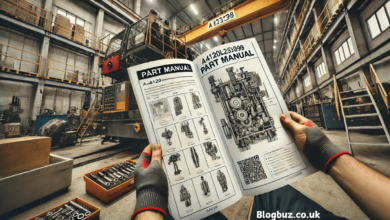The Ultimate Guide to Roofing Maintenance and Replacement

A well-maintained roof is one of the most critical aspects of a safe, energy-efficient, and structurally sound home. Yet, many homeowners overlook their roofing systems until problems become apparent—by which time the damage may be extensive and costly. Whether you’re dealing with routine wear or contemplating a full replacement, understanding how your roofing system works, when it needs attention, and how to extend its life is essential.
This comprehensive guide will help you navigate everything you need to know about roof maintenance, warning signs of deterioration, replacement options, materials, and best practices to ensure long-term durability.
Understanding the Role of Your Roof
Your roof does more than just cover your house—it provides protection against harsh weather, contributes to energy efficiency, and supports the structural integrity of your home. It must handle rain, snow, heat, wind, and debris while maintaining its shape and performance over time.
The components of a roofing system include:
- Shingles or roofing material: The outermost layer that serves as the first line of defense.
- Underlayment: A moisture-resistant barrier beneath the roofing material.
- Decking: The structural base, typically made of plywood or oriented strand board.
- Flashing: Metal pieces that prevent water from seeping into joints and valleys.
- Vents and gutters: For airflow and proper water drainage.
All these elements must work together seamlessly to provide optimal protection.
Signs Your Roof Needs Attention
Roofs have a finite lifespan, and recognizing the early signs of wear can save money and prevent serious damage to your home’s interior. Here are the most common indicators that your roofing system needs inspection or repair:
- Missing or curled shingles: Indicates aging or damage from storms.
- Leaks or water stains on ceilings: Suggests possible breach points in your roof system.
- Granules in gutters: Excess granules from asphalt shingles may indicate the shingles are deteriorating.
- Sagging roof deck: A structural issue that might require immediate attention.
- Moss or algae growth: While it may seem cosmetic, moss retains moisture that can degrade roofing materials.
- Increased energy bills: Poor insulation or damaged roofing can lead to air leaks and temperature imbalances.
If you observe any of these warning signs, it’s best to consult a professional to assess the damage. Hiring a skilled roofer can ensure a thorough evaluation and timely repair or replacement.
Types of Roofing Materials
Choosing the right material for your home depends on various factors including climate, architectural style, and budget. Here are the most common roofing options:
Asphalt Shingles
- Pros: Affordable, easy to install, wide variety of colors and styles.
- Lifespan: 15–30 years.
- Ideal For: Homeowners seeking cost-effective solutions.
Metal Roofing
- Pros: Durable, fire-resistant, recyclable, energy-efficient.
- Lifespan: 40–70 years.
- Ideal For: Homes in areas with heavy snow, wind, or fire risk.
Clay and Concrete Tiles
- Pros: Long-lasting, elegant appearance, good thermal resistance.
- Lifespan: 50–100 years.
- Ideal For: Homes with Mediterranean, Spanish, or Mission-style architecture.
Slate Roofing
- Pros: High-end appearance, extremely durable.
- Lifespan: 75–100 years.
- Ideal For: Historic homes or luxury properties.
Wood Shakes or Shingles
- Pros: Natural appearance, decent insulation properties.
- Lifespan: 30–50 years (with maintenance).
- Ideal For: Rustic or traditional homes.
Each material has its pros and cons. It’s important to consult a roofing professional to help select the best option for your home’s specific requirements.
When Is Roof Replacement Necessary?
While minor repairs can extend the life of your roof, there comes a time when replacement is the most cost-effective and safe option. Replacement is typically recommended if:
- Your roof is nearing or beyond its expected lifespan.
- Repairs have become frequent and costly.
- Structural damage is widespread.
- You want to upgrade your home’s insulation and energy efficiency.
A replacement is also an excellent opportunity to modernize your home’s appearance, increase property value, and improve your household’s comfort level.
Steps in the Roof Replacement Process
Replacing a roof is a significant investment and should be handled with care and professionalism. The general process includes:
- Inspection and Planning
A full inspection identifies existing issues and helps determine the best replacement material. A good roofer will also provide a detailed estimate and timeline. - Removal of Old Roofing
The old materials are stripped off, allowing for a full view of the roof deck and underlying structure. Any damaged decking is repaired or replaced. - Installation of Underlayment and Flashing
This step ensures waterproofing and proper ventilation around joints and chimneys. - Laying New Roofing Material
The selected shingles, tiles, or metal panels are installed according to manufacturer specifications. - Final Inspection and Cleanup
The contractor performs a final walkthrough to ensure quality, removes debris, and provides warranties and maintenance recommendations.
Roof Maintenance Tips for Longevity
Regular maintenance is key to extending the life of your roof and protecting your investment. Here are some best practices:
- Inspect Twice a Year: Check your roof every spring and fall, especially after severe weather.
- Clean Gutters: Clogged gutters can cause water to back up under shingles.
- Remove Debris: Clear leaves, twigs, and branches to prevent moisture buildup.
- Trim Overhanging Trees: Limbs can damage your roof during storms and contribute to moss growth.
- Address Minor Issues Promptly: Small leaks or broken shingles can quickly escalate into larger problems if ignored.
Hiring a professional roofer annually for inspection and maintenance can catch potential issues early, potentially saving thousands in repairs.
Energy Efficiency and Insulation Considerations
A good roof doesn’t just keep water out—it also plays a major role in your home’s energy efficiency. Poor ventilation or inadequate insulation can lead to:
- Higher energy bills
- Uneven indoor temperatures
- Ice dams in winter
- Mold or moisture buildup in attics
During a roof replacement or renovation, consider installing a radiant barrier or upgraded insulation. Some roofing materials, like metal and reflective shingles, also offer higher energy efficiency.
The Importance of Professional Expertise
Even the best roofing material can fail prematurely if installed incorrectly. That’s why choosing a reputable and experienced contractor is essential. A qualified roofer will not only follow industry best practices but also comply with building codes, offer proper warranties, and use high-quality materials.
Ask potential contractors the following:
- Are you licensed and insured?
- Can you provide local references?
- What kind of warranties do you offer?
- Do you use manufacturer-certified installers?
- What’s your cleanup process after the job?
These questions can help you determine who is best suited for your project and give you peace of mind throughout the process.
Conclusion
Your roof is one of the most critical elements of your home, responsible for shielding it from the elements, maintaining energy efficiency, and contributing to curb appeal. Whether you need minor maintenance or a full replacement, taking the time to understand your options—and working with a qualified roofer can ensure your roofing system remains strong, durable, and beautiful for years to come.
Regular inspections, preventive maintenance, and prompt repairs will go a long way toward avoiding costly damage and preserving your home’s value. So don’t wait until you see a leak or missing shingles—your roof deserves proactive care.




